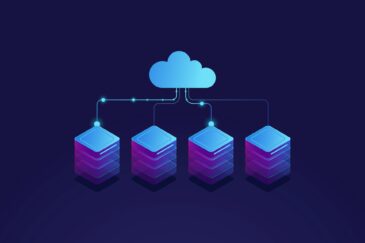The Benefits and Limitations of Lift and Shift Cloud Migration

- May 28, 2024
- Mohammed Nadeem Uddin
- 0
Published On May 28, 2024
Lift and shift cloud migration is a strategy for moving applications, workloads, and data from on-premises infrastructure to a cloud environment with minimal changes. This approach, also known as rehosting, involves transferring existing applications as they are without significant modifications to their architecture or code. It speeds up the process and is often less costly in the short term than other migration strategies.
Migration Process
Assessment
The assessment phase evaluates current on-premises applications, workloads, and infrastructure, identifying dependencies, performance requirements, and potential migration challenges. IT teams assess which applications suit a lift and shift approach based on complexity, business impact, and compatibility with the cloud environment. This step also involves calculating the total cost of ownership (TCO) for running applications in the cloud versus on-premises.
Planning
A detailed migration strategy is developed in the planning phase, including setting timelines, defining roles and responsibilities, and outlining the necessary resources. A migration plan identifies specific tools and services and includes a risk management plan. Communication plans are established to keep stakeholders informed throughout the process.
Replication
The current on-premises environment is replicated in the cloud, creating an exact copy of applications, data, and associated configurations within the cloud infrastructure. Data is copied and synchronized to the cloud to ensure consistency. This step ensures the cloud environment is ready to host the applications without significant changes.
Migration
Migration to the cloud involves transferring applications and data to the cloud infrastructure leveraging tools and services to facilitate the process. Monitoring the migration process to address issues quickly ensures a smooth migration to the cloud with minimal disruption to users and business operations.
Testing
Thorough testing, including performance, security, and integration testing, ensures the applications function correctly in the cloud environment. Any issues identified during testing are resolved to ensure the applications run as expected. User acceptance testing (UAT) is also conducted to validate the migrated applications’ functionality, usability, and performance.
Optimization
The optimization phase allows for fine-tuning the applications and infrastructure to better leverage cloud capabilities, improving scalability, reliability, and overall performance during migration to the cloud.
Benefits of Lift and Shift Cloud Migration
Speed of Migration
Lift and shift cloud migration offers rapid deployment, minimizing disruption to operations and enabling organizations to leverage cloud benefits sooner.
Cost Savings
Lift and shift can immediately save costs by reducing the need for physical hardware and operational expenses. The pay-as-you-go model of most cloud services also leads to cost efficiencies.
Reduced Risk
Lift and shift minimizes the risk of downtime and failures by migrating applications without significant changes, ensuring business continuity and maintaining service levels.
Immediate Cloud Benefits
Moving applications to the cloud allows organizations to use enhanced scalability, improved availability, and access to cloud-based tools and services.
Enhanced Disaster Recovery
Cloud providers offer robust disaster recovery solutions, enhancing the resilience of applications and reducing the potential impact of outages on operations.
Flexibility and Future-Proofing
While lift and shift is a rehosting strategy, it lays the groundwork for future modernization efforts, allowing organizations to innovate and evolve their applications at their own pace.
Limitations of Lift and Shift Cloud Migration
Suboptimal Performance
Applications moved using the lift and shift approach might not perform optimally in the cloud environment. These applications are often designed for on-premises infrastructure and may need to fully leverage the performance benefits of cloud-native architectures. For instance, they might not efficiently use cloud scaling features, resulting in higher latency or slower response times. This can result in a less satisfactory user experience and potentially negate some anticipated benefits of moving to the cloud.
Cost Inefficiency
While lift and shift can lead to immediate cost savings, it might increase operational costs over time. Applications not optimized for the cloud can be resource-intensive and inefficient, increasing computing, storage, and network resource expenses. Without modifications to take advantage of cloud cost-saving features like auto-scaling, reserved instances, or serverless architectures, organizations might face unexpectedly high cloud bills, reducing the overall cost-effectiveness of the migration.
Lack of Cloud-Native Features
Lift and shift migrations must often fully utilize cloud-native features, such as managed services, containerization, or microservices. These features are designed to improve scalability, flexibility, and resilience. By incorporating them, organizations can benefit from the potential improvements in performance, maintenance, and operational efficiency that these cloud-native solutions can provide. This limitation can hinder the ability to innovate and fully utilize the cloud platform’s capabilities.
Technical Debt
Transferring applications to the cloud without any modifications can perpetuate existing technical debt. This includes outdated code, inefficient processes, and legacy architecture constraints. While the application continues to operate as before, the underlying issues remain unresolved. Over time, this technical debt can accumulate, making it increasingly difficult to maintain and upgrade the application. Addressing these issues may require significant re-engineering efforts, negating the lift and shift approach’s initial simplicity and cost benefits.
Security and Compliance Challenges
Applications designed for on-premises environments only meet the security and compliance requirements of the cloud with modifications. Cloud environments have different security models and compliance standards, and applications may need to adapt to these new requirements. Failure to do so can make the organization vulnerable to security and compliance risks. Ensuring the migrated applications comply with relevant regulations and security best practices might require additional effort, which can complicate the lift and shift process.
Integration Issues
Applications that depend on other on-premises systems can face integration challenges after a lift and shift migration. When interacting with on-premises systems or other cloud services, the cloud environment may introduce latency, connectivity, or compatibility problems. These integration issues can affect the overall functionality and performance of the migrated applications, necessitating further adjustments and potentially delaying the realization of the migration benefits.
Conclusion
The lift and shift cloud migration strategy is ideal for organizations with legacy applications that are difficult or costly to modify but need migration to the cloud. Due to its rapid deployment capabilities, it is also beneficial for companies with tight migration timelines or those looking to decommission their data centers quickly. This approach provides a low-risk transition to the cloud, maintaining operational continuity and avoiding significant upfront development efforts. Additionally, it serves as a starting point for future cloud optimization and modernization, offering immediate cloud advantages with minimal disruption.
Cloud migration services providers offer lift and shift migration services for seamless application and workload transfer to the cloud. These services include automated migration tools, consultation and planning support, and dedicated migration teams to ensure a smooth data transition with minimal disruption to business operations.

Services
Products
Company
Copyright © 2024 Rite Software Solutions & Services LLC. All rights reserved.



